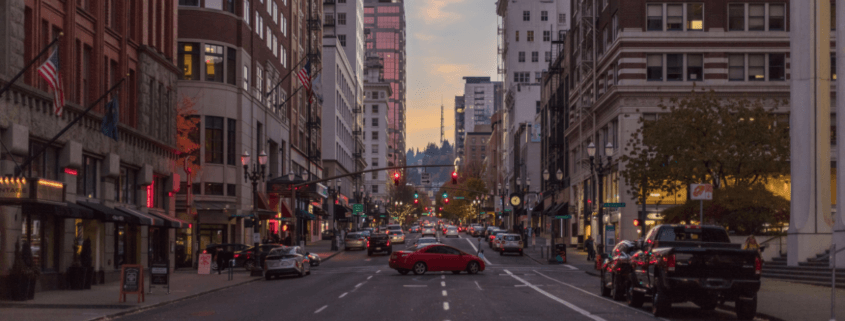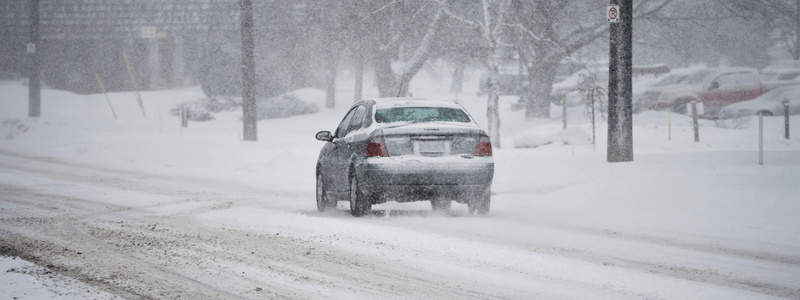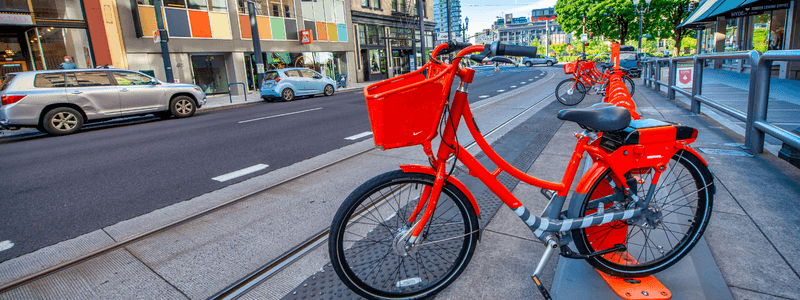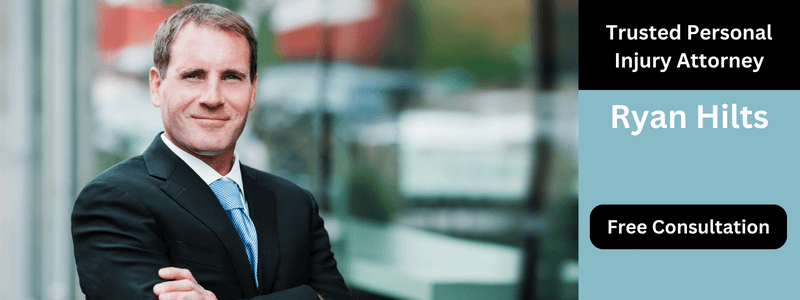Portland, Oregon has a vibrant community with a growing population. With this growth comes increased traffic on the roads, making it essential for residents and visitors to prioritize their safety. Understanding Portland’s road conditions, the role of traffic laws, safe driving practices, and pedestrian and cyclist safety are crucial aspects of preventing personal injuries and accidents. In this article, we will explore these topics and provide valuable tips to help you stay safe on Portland’s roads so you can prevent a Portland personal injury.
UNDERSTANDING PORTLAND’S ROAD CONDITIONS
Before we dive into specific safety measures, let’s take a moment to understand the unique road conditions in Portland.
Portland, known for its vibrant culture and stunning natural beauty, is also home to a diverse range of road conditions. From the bustling city streets to the winding roads that lead to breathtaking viewpoints, navigating Portland’s roads requires a keen understanding of the challenges that lie ahead.
One of the most common road hazards in Portland is the presence of potholes. These pesky craters can appear seemingly out of nowhere, posing a threat to both the stability of your vehicle and your overall driving experience. It’s important to keep a vigilant eye on the road ahead, especially after heavy rainfall or during the winter months when potholes tend to multiply.
In addition to potholes, construction zones are a frequent occurrence in Portland. As the city continues to grow and develop, road construction projects are a common sight. While these projects aim to improve the infrastructure, they can also create temporary road hazards, such as narrowed lanes, detours, and uneven pavement. Staying alert and following any posted signs or instructions is crucial to safely navigate through these areas.
Portland’s unique geography also contributes to the challenges faced by motorists. The city is known for its hilly terrain, which can make driving on certain roads a thrilling adventure. However, it’s important to exercise caution when driving uphill or downhill, as the steep inclines can impact your vehicle’s handling and braking capabilities to avoid a car accident.
Follow Portland’s Weather Report before your next commute.
COMMON ROAD HAZARDS IN PORTLAND
Portland’s roadways present various challenges for motorists, such as potholes, construction zones, and uneven pavement. Being aware of these hazards can help you navigate the roads effectively and avoid potential accidents.
Aside from the physical road hazards, it’s also important to consider the impact of weather conditions on road safety. Given Portland’s rainy climate, rainfall can be a significant factor affecting road conditions. The combination of water and oil residue on the road surface can make it slippery, reducing traction and increasing the risk of accidents. It’s crucial to adjust your driving habits accordingly and allow for additional stopping distance.
Furthermore, Portland experiences occasional snow and ice during the winter months, which can further complicate road conditions. Driving on icy roads requires extra caution, as braking distances increase significantly and the risk of skidding or losing control of your vehicle becomes more prevalent. It’s advisable to equip your vehicle with appropriate winter tires and to drive at reduced speeds to ensure your safety and the safety of others on the road.
WEATHER IMPACT ON PORTLAND’S ROADS
Given Portland’s rainy climate, it’s important to consider how weather conditions can affect road safety. Rainfall can make the roads slippery, reducing traction and increasing the risk of accidents. It’s crucial to adjust your driving habits accordingly and allow for additional stopping distance.
When it comes to road conditions, Portland offers a unique blend of challenges that require drivers to be alert and adaptable. By understanding and respecting the road hazards, as well as adjusting your driving habits to accommodate the weather, you can navigate Portland’s roads with confidence and ensure your safety on your journey through this vibrant city.
SAFE DRIVING PRACTICES IN PORTLAND
Implementing safe driving practices is key to preventing accidents on Portland’s roads. Let’s take a closer look at two essential aspects: defensive driving techniques and vehicle maintenance.
DEFENSIVE DRIVING TECHNIQUES
Defensive driving involves anticipating and responding to potential hazards on the road. By staying focused, maintaining a safe following distance, and avoiding distractions, you can significantly reduce the risk of accidents. Remember, defensive driving isn’t just about protecting yourself; it also ensures the safety of others on the road.
One important defensive driving technique is maintaining situational awareness. This means constantly scanning the road ahead, checking your mirrors, and being aware of your surroundings. By being alert to potential dangers, such as pedestrians crossing the street or other drivers making sudden lane changes, you can react quickly and avoid collisions.
Another crucial aspect of defensive driving is understanding and obeying traffic laws. This includes following speed limits, using turn signals, and yielding to other drivers when necessary. By adhering to these rules, you contribute to the overall safety and flow of traffic in Portland.
Additionally, defensive driving involves adapting to different road and weather conditions. Portland experiences a variety of weather patterns, including rain, fog, and snow. It is important to adjust your driving behavior accordingly, such as reducing speed and increasing following distance, to ensure optimal safety in these conditions.
THE IMPORTANCE OF VEHICLE MAINTENANCE
Regular vehicle maintenance is critical for safe driving. Make sure to schedule routine checks of your tires, brakes, lights, and other essential components. By keeping your vehicle in optimal condition, you can minimize the chances of mechanical failures that may lead to accidents.
When it comes to tire maintenance, ensure that they are properly inflated and have sufficient tread depth. This will provide optimal grip on the road and reduce the risk of skidding or hydroplaning. Regularly inspect your brakes for any signs of wear or deterioration, as they are crucial for effective stopping power.
Properly functioning lights are essential for visibility, especially during low-light conditions or inclement weather. Regularly check your headlights, taillights, brake lights, and turn signals to ensure they are all working correctly. This will help other drivers see you and anticipate your actions, reducing the risk of collisions.
Furthermore, maintaining a clean windshield, free from cracks or obstructions, is essential for clear visibility. Replace windshield wipers regularly to ensure they effectively remove rain or debris from the windshield, providing a clear view of the road ahead.
Regular oil changes and fluid checks are also important for the overall health of your vehicle. Adequate levels of oil, coolant, and transmission fluid help prevent engine damage and ensure smooth operation. Neglecting these maintenance tasks can lead to engine overheating or other mechanical issues, increasing the risk of accidents.
In conclusion, by practicing defensive driving techniques and prioritizing vehicle maintenance, you can significantly reduce the risk of accidents on Portland’s roads. Remember to always stay alert, follow traffic laws, and keep your vehicle in optimal condition for a safe and enjoyable driving experience.
PEDESTRIAN AND CYCLIST SAFETY IN PORTLAND
Portland, also known as the City of Roses, is not only famous for its stunning natural beauty and vibrant culture but also for its commitment to promoting walkability and cyclist-friendly infrastructure. As a motorist, it is crucial to be mindful of pedestrians and cyclists who share the roads, ensuring a safe and harmonious coexistence.
When it comes to navigating Portland’s roads as a pedestrian, there are several key considerations to prioritize your safety. First and foremost, always make use of designated crosswalks when crossing the street. These crosswalks are strategically placed throughout the city, providing pedestrians with a safe path to traverse busy intersections. By obeying traffic signals and patiently waiting for the pedestrian light to turn green, you can ensure a smooth and secure journey.
However, crossing at designated crosswalks alone is not enough. It is equally important to make eye contact with drivers before stepping onto the road. This simple action establishes a visual connection between pedestrians and motorists, ensuring that both parties are aware of each other’s presence. Additionally, wearing reflective clothing can significantly increase your visibility, especially during the darker hours of the day. By incorporating reflective elements into your attire, you enhance your chances of being seen by drivers, further reducing the risk of accidents.
Now, let’s shift our focus to the cyclists who contribute to the vibrant cycling culture of Portland. With an extensive network of bike lanes and cycling-friendly infrastructure, it’s no surprise that cycling is a popular means of transportation in the city. To ensure a safe cycling experience, there are a few essential tips to keep in mind.
Firstly, cyclists should always utilize designated bike lanes whenever possible. These lanes provide a dedicated space for cyclists, separating them from motor vehicle traffic and reducing the chances of collisions. By staying within the bike lanes, cyclists can confidently pedal through the city, knowing that they have a designated space to call their own.
Furthermore, signaling intentions is crucial for cyclists. By using hand signals to indicate turns or lane changes, cyclists communicate their next move to motorists, allowing for a smoother flow of traffic and minimizing the risk of unexpected maneuvers. These simple gestures can make a significant difference in ensuring the safety of both cyclists and motorists on the road.
Lastly, but certainly not least, wearing a helmet is of utmost importance for cyclists. Helmets provide a vital layer of protection, reducing the risk of head injuries in the event of an accident. By strapping on a helmet before embarking on your cycling journey, you prioritize your safety and set a positive example for others.
It is not only the responsibility of pedestrians and cyclists to prioritize safety but also that of motorists. When sharing the road with cyclists, motorists should give them enough space when passing, ensuring a safe distance between the vehicle and the cyclist. Moreover, being cautious when opening car doors is essential to avoid collisions with passing cyclists. By practicing these safety measures, motorists contribute to the overall safety and well-being of all road users in Portland.
In conclusion, pedestrian and cyclist safety in Portland is a shared responsibility among all road users. By following the guidelines and tips mentioned above, we can create a harmonious environment where pedestrians, cyclists, and motorists coexist safely. So, whether you choose to explore the city on foot or by bike, remember to prioritize safety, be mindful of your surroundings, and enjoy the beauty that Portland has to offer.
RESPONDING TO ROAD ACCIDENTS
Despite our best efforts, accidents can still occur on Portland’s roads. Knowing how to respond in such situations is crucial.
WHAT TO DO IMMEDIATELY AFTER AN ACCIDENT
If you find yourself involved in an accident, prioritize safety above all else. Move your vehicle out of traffic if possible, check for injuries to yourself and others, and call emergency services if necessary. Exchange contact and insurance information with the other party involved, and gather any relevant evidence, such as photos or witness statements.
SEEKING MEDICAL AND LEGAL HELP POST-ACCIDENT
After an accident, it’s important to seek medical attention, even if you don’t initially feel injured. Some injuries may take time to manifest. Additionally, consider consulting a personal injury attorney to understand your rights and determine if you are eligible for compensation for any damages sustained.
In conclusion, prioritizing safety on Portland’s roads is essential for preventing personal injuries and accidents. By understanding the unique road conditions, adhering to traffic laws, implementing safe driving practices, and respecting pedestrians and cyclists, we can create a safer commuting environment for everyone. Remember, staying safe on the roads is a collective effort that requires vigilance and responsibility from all road users. Stay cautious, stay informed, and arrive at your destination safely.







